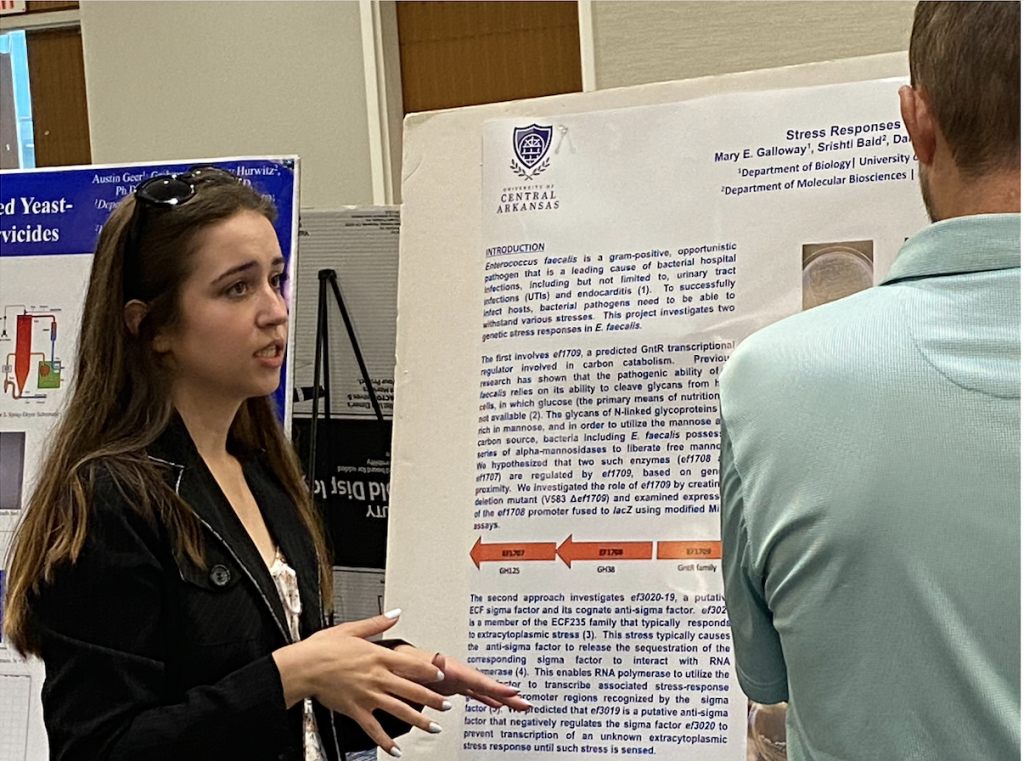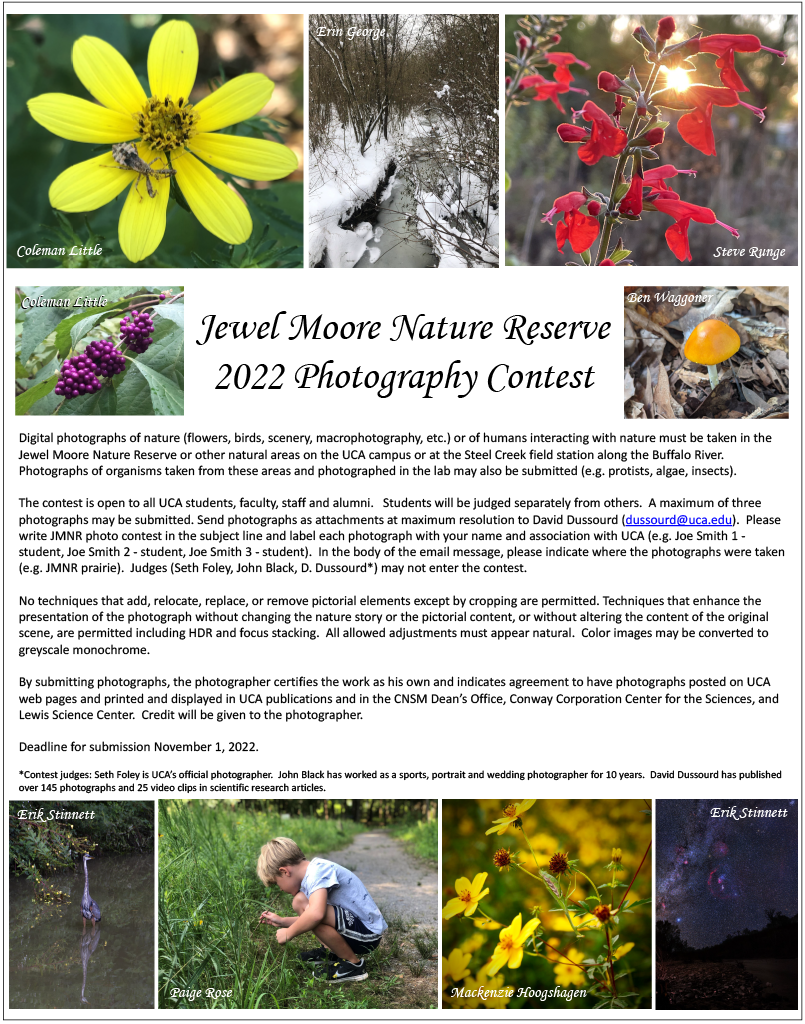Mary Elizabeth Galloway conducted undergraduate molecular biology research in the Hancock lab within the Molecular Biology Department at the University of Kansas. The program was a National Science Foundation (NSF)-funded REU experience and was highly competitive to get into. The theme of the REU was “The Stressed Life of Cells.” Galloway researched genetic regulation in the opportunistic pathogen Enterococcus faecalis and gained skills involving bioinformatic analyses, creating gene mutants, and DNA and RNA extraction. Galloway has also been researching within the Mukherjee lab at UCA since Fall 2021. She claims her experience of working in a research environment at UCA extensively prepared her for her internship experience at KU, as she was equipped with skills involving preparing stock solutions, maintaining sterility, and chemical/bacterial handling, among others. Galloway also credits her coursework at UCA for providing her with the background knowledge necessary to conduct molecular biology research and interpret scientific literature.
It’s All Connected: UCA Professor Explores the Impact of Elements in Freshwater Life
 Graduate Research Assistant Anthony Pignatelli and Assistant Professor Hal Halvorson collect samples from Tucker Creek in Conway.
Graduate Research Assistant Anthony Pignatelli and Assistant Professor Hal Halvorson collect samples from Tucker Creek in Conway.
Perhaps you’ve heard this one. Algae A floats over to Algae B and says, “Hey, how are things?” Algae B happily responds, “Good, thanks! Business is BLOOMING.”
When we stop to explore connections – among plants, animals, humans and ecosystems – we benefit from that resulting knowledge, and interconnectedness lies at the core of the work of Hal Halvorson and his team in the University of Central Arkansas Department of Biology. Through his work in aquatic ecology, Halvorson explores the connections that exist within aquatic environments like lakes, rivers and streams.
He specifically focuses on availability of elements and its effects on living organisms in freshwater environments: Is there enough oxygen? How are the nutrients distributed? How is the growth of plant life, like algae, affecting animal life? Such questions speak to the delicate balance of these ecosystems and to the focus of Halvorson’s work.
Recently, he was awarded a $6 million grant from the National Science Foundation (NSF) for a four-year, multi-site project. Through this project, Halvorson and his student researchers will examine the availability of elements – such as nitrogen and phosphorus – in freshwater environments. For as the availability changes, so too do the organisms.
In discussing these changes in freshwater organisms, Halvorson said, “Most of the changes we’re seeing go back to a shift in the elements available.”
The state of Arkansas, he said, has an excess of nitrogen and phosphorus, present both in land and freshwater. Because of the interconnectedness of life, this excess can negatively affect the ecosystem. For instance, an overabundance of nitrogen and phosphorus stimulates the overgrowth of algae, which by decreasing oxygen availability can cause the death of animals and other plants. These deaths then affect human lives.

“So much of our society is linked to freshwater,” Halvorson explained. “And because elements are the same everywhere, it makes this research applicable within the state and outside of Arkansas as well.”
The NSF grant is a collaborative effort that extends both west and east. Halvorson’s UCA team is working with professors and students from the University of Nebraska-Lincoln, University of Wyoming, and Middlebury College in Vermont.
“We’re bringing together datasets,” Halvorson added.
The goal is to build a database, the Stoichiometric Traits of Organisms in their Chemical Habitats (STOICH) Database, that hosts information on the elemental make-up of freshwater organisms and their environments. Combining the expanding datasets from the four institutions, the STOICH project is a unified, national effort that draws parallels across states.
“The database will give us a sense of how different systems compare,” Halvorson shared. “I can place the lake I study relative to other lakes around the country. Now, imagine that investigators ask about one lake. Yes, mine and theirs are two different lakes. But in what ways can we connect these together to better understand the different water quality?”
However, the data gathered means little if no one has access to it. This project is therefore extending a line to the public through access and outreach. The database will be publicly accessible, allowing anyone to benefit by better understanding how elemental shifts in freshwater ecosystems affect them.
Additionally, Halvorson is involving both undergraduate and graduate students in the research.
“We have primarily undergrad students. What we’re doing is developing curricula around the grant that we’ll implement here at UCA. We think they will learn a lot,” he said.
The grant also allows greater outreach by partnering with the Society for Freshwater Science’s Instars and Emerge programs, which focus on diversity, equity and inclusion. Through professional development workshops, networking and mentoring, these two programs aim to increase the presence and persistence of historically underrepresented populations in the field of freshwater science. Thus, the findings and active experiences of the STOICH project are put in conversation with these groups in an effort to continually diversify the field now and into the future.
“This grant was a great opportunity,” Halvorson shared.
In addition to keeping UCA up to speed with the data revolution, the grant helps to involve more people in the research developments. Because the ecosystem is connected, each part has an affect on another. Understanding how it all fits together supports the survival of the all the planet’s inhabitants.

2021 JMNR Photo Contest Winners
Congratulations to our photo contest winners. The winning photos will be displayed in the CNSM Dean’s office located in Lewis Science Center 145.
Student Category:
1st Place – Jackson Renfroe, Biology Major
2nd Place: Jackson Renfroe, Biology Major
Faculty Staff Category:
1st Place: Mackenzie Hoogshagen, Alumna
2nd Place: Will Flatley, Assistant Professor,Geography
Thank you to everyone who submitted photographs and to our judges, David Dussourd, John Black and Seth Foley!
2020 JMNR Photo Contest Winners
Congratulations to our photo contest winners. The winning photos will be displayed in the CNSM Dean’s office located in Lewis Science Center 145.
Student Category:
1st Place – Michelle Benson, Biology Major
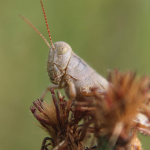
2nd Place: Erik Stinnett, Computer Science Major
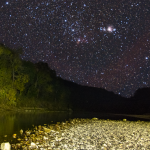
Faculty Staff Category:
1st Place: Windy Lowder, Communications Specialist, UCAPD

2nd Place: Coleman Little, Visiting Lecturer, Biology

Thank you to everyone who submitted photographs and to our judges, John Black and Seth Foley!
4th Annual JMNR Photo Contest
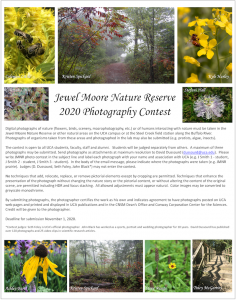
The deadline for the fourth annual Jewel Moore Nature Reserve Photo Contest is rapidly approaching (November 1!!). Instructions for participating are attached. With the pandemic, economic distress, climate change, and political pandemonium overwhelming us, the nature reserve provides a comforting escape.
Please announce the contest to your students and invite them to submit up to three photographs to my email address. Please also consider submitting up to three of your own photographs. There are separate categories for students (undergraduate and graduate combined) and for faculty/staff/alumni.
This is our chance to get a little free publicity for our beautiful reserve – and your chance to see your photographs displayed in the Dean’s office, on the walls in LSC and CCCS, and in UCA publications and web sites.
No cost to enter. Thanks! David

